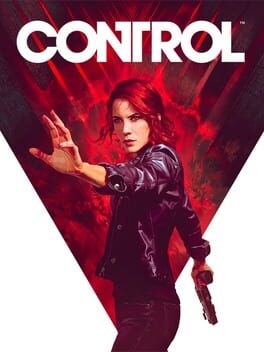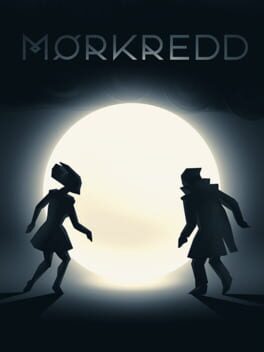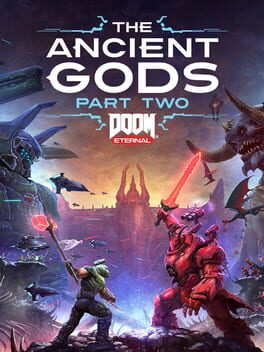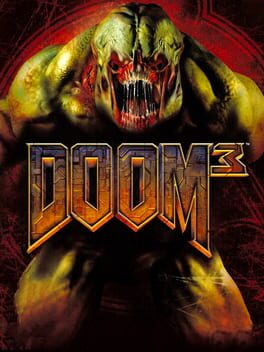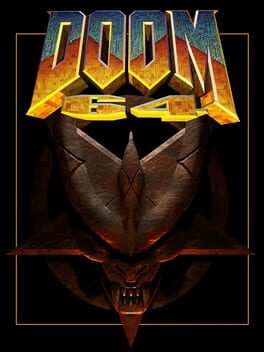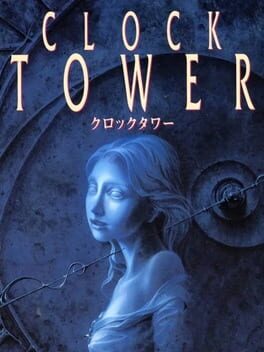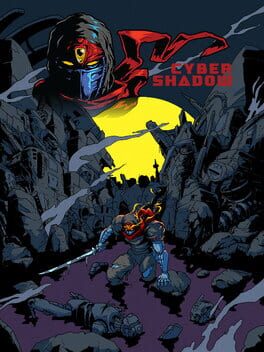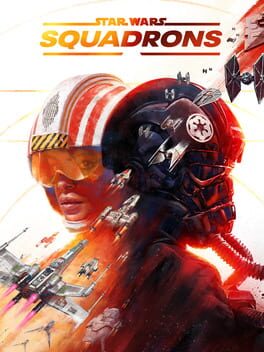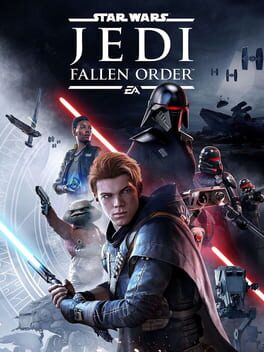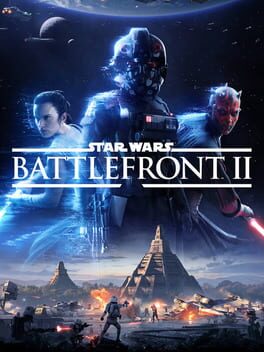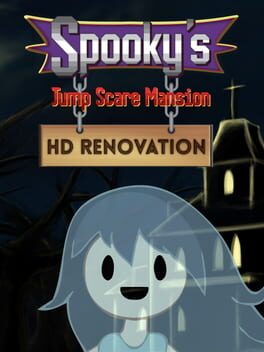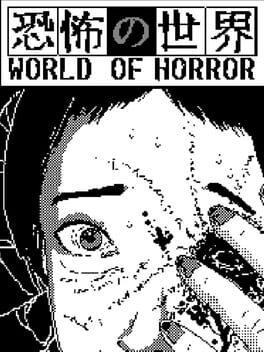HaroKid
2019
Control is a sort of big-budget take on an SCP game and has a few gameplay and story hooks just interesting enough to keep you going until the game abruptly ends.
The storytelling of Control is unconventional, and the tone of the world successfully sells itself, but I find it leaves a good chunk to be desired in substance - While some threats are totally alien or horrific, the vast majority of enemies are "Guy with gun, but red", and doesn't quite live up to what I would expect from a secret bureau that attempts to find and contain paranormal beings or objects that bend reality.
This is mostly fine, because the gameplay and powers of Control are quite satisfying to master and chain together combos with, provided the opportunity. Once again however, I find myself wishing that Control pushed this aspect of the game more extremely, as there often isn't much preventing me from sitting at the end of any given room taking potshots at enemies for the entire encounter. I know the fun is there to be had, but in a way I have to force myself to go out and have it by experimenting with different powers and weapons when there is seldom an incentive to. In that sense, the combat can feel dull or even dumb, which is a letdown.
The animations are just-Good. Not bad, but nothing groundbreaking. Visually where Control excels is in a solid art direction and an immersive-but-not-overbearing utilization of ray tracing technology. Control is a fun game, but even if it wasn't, it would be an excellent tech demo.
The game's story just sort of ends and feels incomplete, as if to say "Buy the DLC to see what happens next!", so in a similar fashion, I'm gonna end the review here without any sort of conclusion of substance.
The storytelling of Control is unconventional, and the tone of the world successfully sells itself, but I find it leaves a good chunk to be desired in substance - While some threats are totally alien or horrific, the vast majority of enemies are "Guy with gun, but red", and doesn't quite live up to what I would expect from a secret bureau that attempts to find and contain paranormal beings or objects that bend reality.
This is mostly fine, because the gameplay and powers of Control are quite satisfying to master and chain together combos with, provided the opportunity. Once again however, I find myself wishing that Control pushed this aspect of the game more extremely, as there often isn't much preventing me from sitting at the end of any given room taking potshots at enemies for the entire encounter. I know the fun is there to be had, but in a way I have to force myself to go out and have it by experimenting with different powers and weapons when there is seldom an incentive to. In that sense, the combat can feel dull or even dumb, which is a letdown.
The animations are just-Good. Not bad, but nothing groundbreaking. Visually where Control excels is in a solid art direction and an immersive-but-not-overbearing utilization of ray tracing technology. Control is a fun game, but even if it wasn't, it would be an excellent tech demo.
The game's story just sort of ends and feels incomplete, as if to say "Buy the DLC to see what happens next!", so in a similar fashion, I'm gonna end the review here without any sort of conclusion of substance.
2019
Its easy to be cynical of just about every aspect DEATH STRANDING has on offer, but against all odds it is an extremely charming, emotional, and satisfying game.
At some point it is tempting to ask "Why is this not a movie?", or to reduce it to a "walking simulator" - Only fair considering the sheer magnitude of cutscenes on offer, and the gameplay is quite literally walking, but DEATH STRANDING as a whole has so many quirks and habits in stylization and storytelling that make it something you could not experience in any other medium, and something not experienced before in video games.
The level of detail, sense of scale, amount of self-aware charm and absurdity elevate DEATH STRANDING from a generic open world title to something that oozes uniquity. It can be frustrating, demanding, confusing, or just straight up goofy, but not once did it bore me. Likewise it can be meditative, immersive, intimate, impressive, and genuinely hilarious.
The social collaboration aspect of the structure building is immensely satisfying and relieving, and the strategic planning for each other-wise-would-be-dull fetch quest is stimulating. The grand plot of the game is nonsense in spite of every detail being over-explained to exhaustion, but the performance of the cast and exceptional direction keep me invested anyway, and often leads to genuinely emotional moments that wow, even if they can be undercut by relentless exposition mere seconds later.
The product placements (There's more than one) should be an artistic compromise, and I don't feel its wrong to criticize those aspects, but something about the sheer absurdity of them miraculously sells me on the tone of the world and its storytelling just a little bit more.
I find it likely I could read just about any criticism of DEATH STRANDING, understand it, probably agree with it, and still somehow love the game for it:
The dialogue is corny, the game is overlong and ends about 15 times, the combat is primitive, off-road vehicle handling is atrocious, the best structures are the ones that circumvent the main gameplay, The game is endless "Go From Point A to Point B" bookended by hours of cutscenes, most of the boss fights aren't great, etc., etc.
But at the end of the day, the only disdain I have towards the game without an asterisk of some kind is Troy Baker's gaudy and unlikeable-in-every-scene Higgs.
DEATH STRANDING is the first Hideo Kojima game I've experienced and I'm only looking forward to more.
DEATH STRANDING is entirely overconfident in itself to a degree that is almost impossible for me to not admire. If nothing else, it is the most unique game that I've had the pleasure of playing.
At some point it is tempting to ask "Why is this not a movie?", or to reduce it to a "walking simulator" - Only fair considering the sheer magnitude of cutscenes on offer, and the gameplay is quite literally walking, but DEATH STRANDING as a whole has so many quirks and habits in stylization and storytelling that make it something you could not experience in any other medium, and something not experienced before in video games.
The level of detail, sense of scale, amount of self-aware charm and absurdity elevate DEATH STRANDING from a generic open world title to something that oozes uniquity. It can be frustrating, demanding, confusing, or just straight up goofy, but not once did it bore me. Likewise it can be meditative, immersive, intimate, impressive, and genuinely hilarious.
The social collaboration aspect of the structure building is immensely satisfying and relieving, and the strategic planning for each other-wise-would-be-dull fetch quest is stimulating. The grand plot of the game is nonsense in spite of every detail being over-explained to exhaustion, but the performance of the cast and exceptional direction keep me invested anyway, and often leads to genuinely emotional moments that wow, even if they can be undercut by relentless exposition mere seconds later.
The product placements (There's more than one) should be an artistic compromise, and I don't feel its wrong to criticize those aspects, but something about the sheer absurdity of them miraculously sells me on the tone of the world and its storytelling just a little bit more.
I find it likely I could read just about any criticism of DEATH STRANDING, understand it, probably agree with it, and still somehow love the game for it:
The dialogue is corny, the game is overlong and ends about 15 times, the combat is primitive, off-road vehicle handling is atrocious, the best structures are the ones that circumvent the main gameplay, The game is endless "Go From Point A to Point B" bookended by hours of cutscenes, most of the boss fights aren't great, etc., etc.
But at the end of the day, the only disdain I have towards the game without an asterisk of some kind is Troy Baker's gaudy and unlikeable-in-every-scene Higgs.
DEATH STRANDING is the first Hideo Kojima game I've experienced and I'm only looking forward to more.
DEATH STRANDING is entirely overconfident in itself to a degree that is almost impossible for me to not admire. If nothing else, it is the most unique game that I've had the pleasure of playing.
2020
The Ancient Gods Part 2 is a disappointing follow-up to the excellent Part 1, failing to deliver both the epic scale and satisfying ending that was promised.
Ancient Gods Part 2 offers exciting new enemies, and some new tech to deal with the old enemies. Tweaks to player information on stunned enemies, alternative ways to deal with formerly more-irritating-than-fun enemies, and new slots for the existing sandbox to fall into are all smart and welcome decisions.
The visuals are as excellent as ever, which is no surprise, and though the environments are all new to Doom Eternal, they're notably less dramatic than either the base game or the Ancient Gods part 1.
This is also felt in the combat - Somehow, Ancient Gods Part Two is incredibly easier than the first. This is fine, as difficulty options allow you to ramp up or down the difficulty in either case, but it lets down the finality of the drama the story attempts to tell.
Firefights are not nearly as intense, but they are still quite fun. The Ancient Gods Part 2 is unfortunately let down by an obnoxious final boss fight regardless of difficulty option (Let me fight 2 marauders simultaneously again any day instead), and the story itself whimpers to an unimpressive end.
While the first half of The Ancient Gods felt promising and exciting, the second half has me wishing iD software skipped any story DLC and instead kept the extra story to another Doom Sequel.
Ancient Gods Part 2 offers exciting new enemies, and some new tech to deal with the old enemies. Tweaks to player information on stunned enemies, alternative ways to deal with formerly more-irritating-than-fun enemies, and new slots for the existing sandbox to fall into are all smart and welcome decisions.
The visuals are as excellent as ever, which is no surprise, and though the environments are all new to Doom Eternal, they're notably less dramatic than either the base game or the Ancient Gods part 1.
This is also felt in the combat - Somehow, Ancient Gods Part Two is incredibly easier than the first. This is fine, as difficulty options allow you to ramp up or down the difficulty in either case, but it lets down the finality of the drama the story attempts to tell.
Firefights are not nearly as intense, but they are still quite fun. The Ancient Gods Part 2 is unfortunately let down by an obnoxious final boss fight regardless of difficulty option (Let me fight 2 marauders simultaneously again any day instead), and the story itself whimpers to an unimpressive end.
While the first half of The Ancient Gods felt promising and exciting, the second half has me wishing iD software skipped any story DLC and instead kept the extra story to another Doom Sequel.
2004
If it weren't for the Doom name attached to it, Doom 3 would have already been forgotten about along with every other mediocre first person shooter from the 2000s.
In some ways Doom 3 is a logical progression from iD Software's Doom 64 - Furthering the dark and horror aesthetic of that game and sprinkling it into the mechanics themselves. Perhaps if Doom 3 committed to being a true survival horror shooter, it could have worked, but the end result is "Kind of Doom, But Slow" instead.
After the allure of the horror aesthetic quickly dissipates within the first 30 minutes, you find yourself trudging through hours of same-looking dark sci-fi corridors, shooting awfully unsatisfying guns at bullet spongy enemies that result in even less satisfying death animations.
The game improves as more demon types show up, but even appreciating those comes with a few asterisks. Most enemies have a radical redesign, and very few of those land. The coolest monsters in Doom 3 are those original to this entry, though I still can't tell if it was their raw cool factor, or their novelty that charmed me.
Doom 3 weaves together all of its levels in a somewhat seamless-feeling progression throughout a UAC Mars base. This is part of the reason so much of the game's levels look and feel the same, and in some ways it reminds me of a poor man's Half-Life. Doom 3 also introduces cutscenes and voiced characters in an attempt to weave together a narrative, though honestly I fail to see the value in the attempt, as Doom 3 practically doesn't have a story anyway.
At times Doom 3's environments boast impressive detail and interactivity, but that too gets old quick. Scouring through emails to find codes, or fiddling with janky control panels to control various contraptions once again feels like extra, unnecessary steps to the Doom formula of Hit Button, Find Key.
Doom 3 experiments with a lot of things new for Doom, but never fully commits to its new ideas. Anything that I can almost appreciate comes with some sort of caveat. Sure, for the time on a technical level, Doom 3 was graphically impressive. But aesthetically it looks like a fake video game you might see someone playing in a movie or TV show.
Doom 3 is ugly, slow, and unsatisfying. It is the perfect companion to the 2005 Doom movie.
In some ways Doom 3 is a logical progression from iD Software's Doom 64 - Furthering the dark and horror aesthetic of that game and sprinkling it into the mechanics themselves. Perhaps if Doom 3 committed to being a true survival horror shooter, it could have worked, but the end result is "Kind of Doom, But Slow" instead.
After the allure of the horror aesthetic quickly dissipates within the first 30 minutes, you find yourself trudging through hours of same-looking dark sci-fi corridors, shooting awfully unsatisfying guns at bullet spongy enemies that result in even less satisfying death animations.
The game improves as more demon types show up, but even appreciating those comes with a few asterisks. Most enemies have a radical redesign, and very few of those land. The coolest monsters in Doom 3 are those original to this entry, though I still can't tell if it was their raw cool factor, or their novelty that charmed me.
Doom 3 weaves together all of its levels in a somewhat seamless-feeling progression throughout a UAC Mars base. This is part of the reason so much of the game's levels look and feel the same, and in some ways it reminds me of a poor man's Half-Life. Doom 3 also introduces cutscenes and voiced characters in an attempt to weave together a narrative, though honestly I fail to see the value in the attempt, as Doom 3 practically doesn't have a story anyway.
At times Doom 3's environments boast impressive detail and interactivity, but that too gets old quick. Scouring through emails to find codes, or fiddling with janky control panels to control various contraptions once again feels like extra, unnecessary steps to the Doom formula of Hit Button, Find Key.
Doom 3 experiments with a lot of things new for Doom, but never fully commits to its new ideas. Anything that I can almost appreciate comes with some sort of caveat. Sure, for the time on a technical level, Doom 3 was graphically impressive. But aesthetically it looks like a fake video game you might see someone playing in a movie or TV show.
Doom 3 is ugly, slow, and unsatisfying. It is the perfect companion to the 2005 Doom movie.
1997
I have seen Doom 64 hailed as "The Real Doom 3", but to a degree 64 acts as the connective tissue between the fast action of Dooms I & II to the horror atmosphere of Doom 3, in some way justifying the direction of the latter.
I might be tempted to call 64 "The Real Doom II" moreso than a "Doom 3", but either label really only acts as a slight criticism of games that aren't Doom 64.
Doom 64 is a relatively bold shift in the Doom aesthetic coming off of Doom 2 - For one, instead of rocking out to .MIDI guitar solos while blasting away swaths of demons, the soundtrack has you looking over your shoulder for any demons that may have snuck up on you... While blasting away swaths of demons.
At it's core, Doom 64 is still classic Doom gameplay, more or less. After the initial shock to the system, Doom 64's atmosphere loses its grasp on you as the familiarity of the gameplay loop sinks in. There are some sandbox differences, aside from visual - The addition of a new Cell weapon, the subtraction of some enemies from Doom II, and tweaks across the board. Most irritating of these tweaks are a change in behavior for the Lost Souls that transform a formerly pesky and annoying enemy, to one that will straight up ruin your day.
On the technical side, Doom 64 offers some nice audio effects and improved color lighting, which the game is quick to abuse, including one flashing light sequence that is prone to at least induce headaches, and could potentially be an actual health risk.
64 experiments with including more shifting geometry, which is no doubt impressive coming from Doom 2, but ultimately does not offer any major revolutions in the Doom formula, such as vertical mouselook aiming, jumping, or vertically layered 3D environments.
When you get past the horror atmosphere and some improved environmental design, Doom 64 shows its true colors as "Just More Doom, But Kind of Worse". Annoying habits in level design such as hitting plenty of buttons and switches that maybe do something on the other side of the map, and a collection of demons that feel lacking in variety firmly plant Doom 64 in that "Weird Game In The Franchise" category, failing to earn its hidden gem status.
Still, it is Doom. And Doom is nothing if not pretty solid.
I might be tempted to call 64 "The Real Doom II" moreso than a "Doom 3", but either label really only acts as a slight criticism of games that aren't Doom 64.
Doom 64 is a relatively bold shift in the Doom aesthetic coming off of Doom 2 - For one, instead of rocking out to .MIDI guitar solos while blasting away swaths of demons, the soundtrack has you looking over your shoulder for any demons that may have snuck up on you... While blasting away swaths of demons.
At it's core, Doom 64 is still classic Doom gameplay, more or less. After the initial shock to the system, Doom 64's atmosphere loses its grasp on you as the familiarity of the gameplay loop sinks in. There are some sandbox differences, aside from visual - The addition of a new Cell weapon, the subtraction of some enemies from Doom II, and tweaks across the board. Most irritating of these tweaks are a change in behavior for the Lost Souls that transform a formerly pesky and annoying enemy, to one that will straight up ruin your day.
On the technical side, Doom 64 offers some nice audio effects and improved color lighting, which the game is quick to abuse, including one flashing light sequence that is prone to at least induce headaches, and could potentially be an actual health risk.
64 experiments with including more shifting geometry, which is no doubt impressive coming from Doom 2, but ultimately does not offer any major revolutions in the Doom formula, such as vertical mouselook aiming, jumping, or vertically layered 3D environments.
When you get past the horror atmosphere and some improved environmental design, Doom 64 shows its true colors as "Just More Doom, But Kind of Worse". Annoying habits in level design such as hitting plenty of buttons and switches that maybe do something on the other side of the map, and a collection of demons that feel lacking in variety firmly plant Doom 64 in that "Weird Game In The Franchise" category, failing to earn its hidden gem status.
Still, it is Doom. And Doom is nothing if not pretty solid.
Hell on Earth is more additive expansion than it is revolutionary sequel - Additional weapons and demons bring Doom II to something that feels more complete and rounded out, but doesn't offer much in the way of feeling like a proper sequel to the original Doom.
In broad strokes, the first 20 levels of Hell on Earth's campaign offer a nice upgrade in the intricacy department while maintaining a mostly tight flow throughout that feels like a proper evolution of Doom's level design. The game's final 10 levels, however, sometimes feel like they're trying their very hardest to extinguish any positives of the first two act's offerings, often relying on annoying gimmicks, bloat, and purposeful obtuseness. Extensive gameplay additions like vertical mouselook aiming weren't necessary in the original Doom, but is something that would have been more than welcome given Hell on Earth's insistence on levels with an extreme emphasis on verticality.
Doom II reinforces the idea that though the base game is undoubtedly solid, it's only as good as its levels. Doom II's sandbox is definitive, and was ultimately a venue for commercializing Doom rather than aiming to be a radical follow-up - The sum of those parts: You're probably better off playing through countless user made .WADs using a modern source port.
In broad strokes, the first 20 levels of Hell on Earth's campaign offer a nice upgrade in the intricacy department while maintaining a mostly tight flow throughout that feels like a proper evolution of Doom's level design. The game's final 10 levels, however, sometimes feel like they're trying their very hardest to extinguish any positives of the first two act's offerings, often relying on annoying gimmicks, bloat, and purposeful obtuseness. Extensive gameplay additions like vertical mouselook aiming weren't necessary in the original Doom, but is something that would have been more than welcome given Hell on Earth's insistence on levels with an extreme emphasis on verticality.
Doom II reinforces the idea that though the base game is undoubtedly solid, it's only as good as its levels. Doom II's sandbox is definitive, and was ultimately a venue for commercializing Doom rather than aiming to be a radical follow-up - The sum of those parts: You're probably better off playing through countless user made .WADs using a modern source port.
1993
It's hard to criticize the single most influential FPS of all time without sounding nitpicky or contrarian, but the truth is that while Doom is masterful in many ways, it very apparently left room for improvement, as evidenced by Ultimate Doom's additional episode, Thy Flesh Consumed, and the expansiveness of user-made .WADs.
Knee-Deep in the Dead and The Shores of Hell are simplistic, but brisk, constantly keeping the player flowing through the enticing action that Doom's menagerie of demons and arsenal of weapons provide.
Inferno offers some more complex levels, but at the cost of that aforementioned flow, and can often feel obtuse or bloated.
Ultimate Doom's addendum in Thy Flesh Consumed proves that while Doom's base is strong, what really elevates it is excellent level design. Not every level here is a hit, but most offer compact, yet intricate almost puzzle-like levels that require problem solving above just twitch reaction in combat.
Throughout Doom, there are aspects I question, such as certain power-ups resulting in headache-inducing color overlays on the screen, or the game's obsession with making you wade through puddles of toxic sludge in what begins to feel like every other level, but by playing through the game, it's no mystery it was the sensation it was.
Knee-Deep in the Dead and The Shores of Hell are simplistic, but brisk, constantly keeping the player flowing through the enticing action that Doom's menagerie of demons and arsenal of weapons provide.
Inferno offers some more complex levels, but at the cost of that aforementioned flow, and can often feel obtuse or bloated.
Ultimate Doom's addendum in Thy Flesh Consumed proves that while Doom's base is strong, what really elevates it is excellent level design. Not every level here is a hit, but most offer compact, yet intricate almost puzzle-like levels that require problem solving above just twitch reaction in combat.
Throughout Doom, there are aspects I question, such as certain power-ups resulting in headache-inducing color overlays on the screen, or the game's obsession with making you wade through puddles of toxic sludge in what begins to feel like every other level, but by playing through the game, it's no mystery it was the sensation it was.
1995
A neat little horror game that feels unique and ahead of its time among the slim category of horror titles available on consoles around the time. Sluggish controls are not too bad when you consider the happily, relatively short play time. Different endings and scenario possibilities also promote replay ability, which is always fun.
Bob is a funny little fella ✂️
Bob is a funny little fella ✂️
2021
Cyber Shadow has some clever ideas but ultimately is over-long and not very fun.
I expected more Ninja Gaiden, fast-paced rhythm - After accepting that that's not what the game is, I still find myself being frustrated and not having fun. The bey-blade-on-a-rope power up is Cyber Shadow's coolest component, to a degree that I wish the whole game was built around it.
Most of my other gripes could be solved by being able to customize button mapping - On a controller with 4 face buttons and 4 shoulder buttons, utilizing only 2 buttons throughout the whole game in the name of emulating NES controls is a waste.
I can only recommend sticking to actual Ninja Gaiden if you want to scratch that itch, or checking out The Messenger.
I expected more Ninja Gaiden, fast-paced rhythm - After accepting that that's not what the game is, I still find myself being frustrated and not having fun. The bey-blade-on-a-rope power up is Cyber Shadow's coolest component, to a degree that I wish the whole game was built around it.
Most of my other gripes could be solved by being able to customize button mapping - On a controller with 4 face buttons and 4 shoulder buttons, utilizing only 2 buttons throughout the whole game in the name of emulating NES controls is a waste.
I can only recommend sticking to actual Ninja Gaiden if you want to scratch that itch, or checking out The Messenger.
2020
The sense of speed and cinematic-ness of combat takes a back seat in favor of a daunting but totally immersive level of input - If simulating flying an X-Wing is what you're looking for, Squadrons is a perfect vehicle for that, but if you want to feel like you're taking part in an on-screen battle from the movies, something more arcade in nature ironically feels more authentic.
Getting into the flow of things is satisfying, though the campaign too often feels chore-like and dull, preventing that flow from occurring very frequently - Whether that's a product of frustrating/boring mission design, the reliance on checkpoints vs a "lives" system that would let you jump right back into the action, or the constant restriction of which ships you can pilot vs the actual ships you enjoy piloting.
Either way, Squadrons is a neat little game with some excellent production value that's sure to be a specific cup of tea for a specific group of people.
Getting into the flow of things is satisfying, though the campaign too often feels chore-like and dull, preventing that flow from occurring very frequently - Whether that's a product of frustrating/boring mission design, the reliance on checkpoints vs a "lives" system that would let you jump right back into the action, or the constant restriction of which ships you can pilot vs the actual ships you enjoy piloting.
Either way, Squadrons is a neat little game with some excellent production value that's sure to be a specific cup of tea for a specific group of people.
Battlefront II 2017 continues the Battlefront tradition of offering a mostly solid, but slightly mediocre shooter experience in the Star Wars wrapper.
Gameplay-wise, the Story Mode is boring, though the cutscenes and story are alright. The meat of the game is in the various multiplayer modes that do offer quite a bit of fun, even if they lack depth or complexity.
Gameplay-wise, the Story Mode is boring, though the cutscenes and story are alright. The meat of the game is in the various multiplayer modes that do offer quite a bit of fun, even if they lack depth or complexity.
2020
I didn't expect to functionally "finish" World of Horror as fast as I did - The modular rogue-lite experience is something that's fairly cool and the visually stimulating presentation makes it worth playing, but I can't help but wonder if a single, hand-crafted experience wouldn't be strictly more engaging.
Some of the mysteries aren't the most interesting, and grasping all of the mechanics and UI on the initial playthrough isn't the easiest thing in the world - After the initial playthrough, immediately starting a new run isn't the most exciting prospect once you know you may have to replay some of the same mysteries.
Probably worth checking out on the prospect of being inspired by Junji Ito alone if you're a fan of those works, but I still enjoyed it enough without any prior experience with the mangaka.
Some of the mysteries aren't the most interesting, and grasping all of the mechanics and UI on the initial playthrough isn't the easiest thing in the world - After the initial playthrough, immediately starting a new run isn't the most exciting prospect once you know you may have to replay some of the same mysteries.
Probably worth checking out on the prospect of being inspired by Junji Ito alone if you're a fan of those works, but I still enjoyed it enough without any prior experience with the mangaka.
